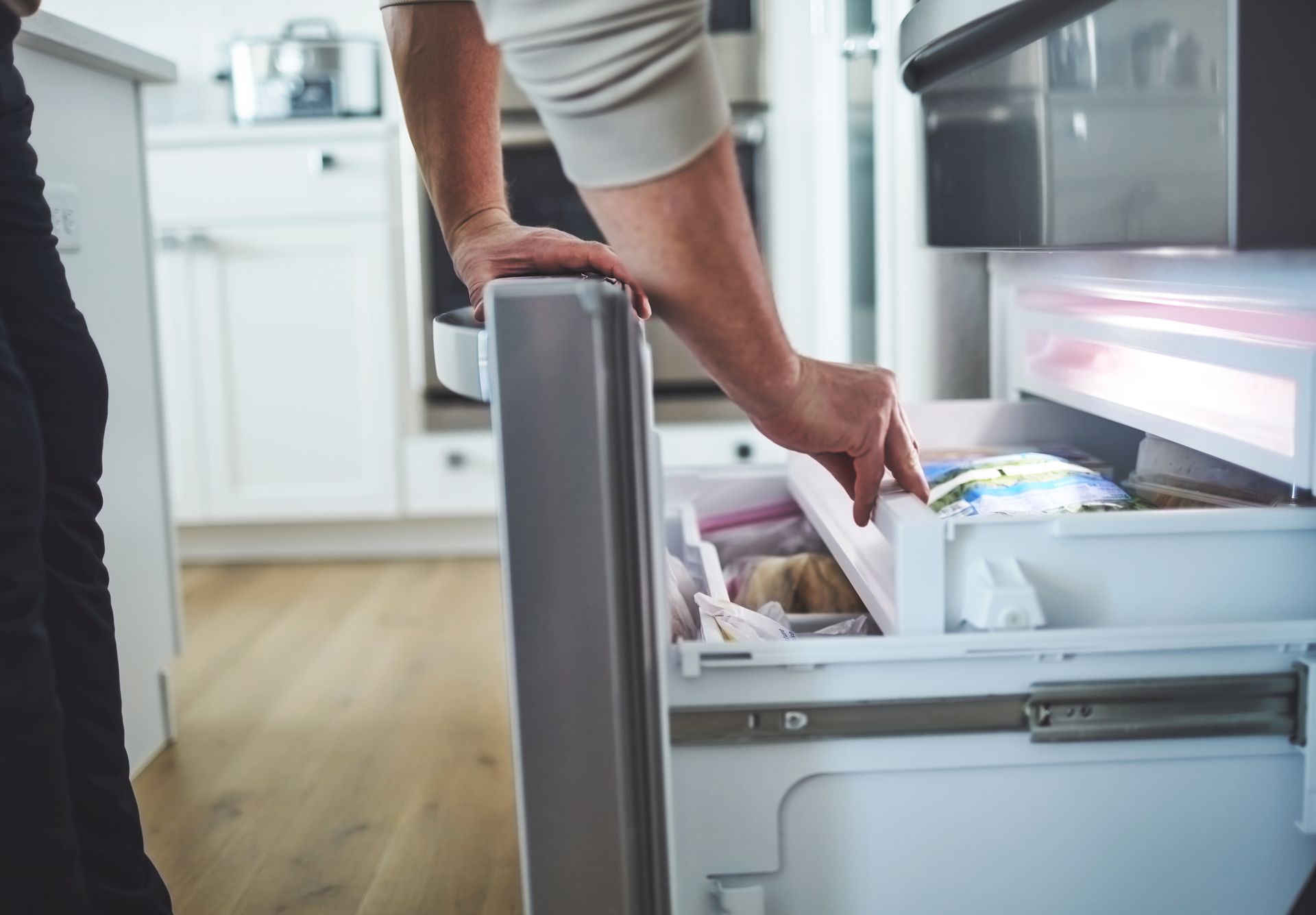Getty ImagesContinue reading Getty Images
Whether you’re buying in bulk, going out of town, or simply changing your dinner plans, this guide will walk you through the ins and outs of freezing meats, ensuring your protein needs are always met. So, let’s dive right in!
Why Freeze Meat?
Freezing meat is an excellent way to preserve its freshness and nutritional value for a later date. The United States Department of Agriculture confirms that “the freezing process itself does not destroy nutrients. In meat and poultry products, there is little change in nutrient value during freezer storage.”
Freezing allows you to stock up on proteins when they’re on sale or if you’re buying in bulk. It’s one approach to help you save money while maintaining a wholesome and balanced diet. In addition to convenience, freezing meats allows you to have a wide selection of proteins available at any time. Instead of feeling pressured to consume all your fresh meats before they spoil, you can simply freeze them. This method helps you make the most of your grocery purchases and reduces the amount of food wasted.
Which Proteins Are Smart for Freezing?
When it comes to freezing meats, not all cuts are created equal. For weight loss, opt for lean cuts such as chicken breast, turkey breast, lean beef, and fish. These protein-packed choices will keep you full with the least amount of calories and fat per serving. Additionally, don’t worry about cooking the proteins first. Freezing these proteins raw actually helps to retain more moisture.
How to Package Your Proteins for a Perfect Freeze
The experts at the USDA remind us that “being able to freeze food and being pleased with the quality after defrosting are two different things.” Proper packaging is crucial to prevent freezer burn and maintain the flavors and textures of your frozen meats. Additionally, keep in mind that some foods simply don’t freeze well, like eggs in their shell.
5 Steps for Optimal Results When Freezing
- Wrap Individual Portions: Divide your meat into individual servings. This strategy allows you to thaw only what you need. A practical way to gauge a standard portion size of protein is by using the palm of your hand as a reference. Comparing the size and thickness of the protein to your palm can provide a convenient estimation. Before freezing, wrap each protein portion tightly in plastic wrap.
- Double Layer for Protection: To prevent any leaks or odors, place the wrapped portions of protein into a larger resealable freezer bag or wrap them again with aluminum foil. Double-layering provides an extra layer of protection against freezer burn and helps to maintain optimal freshness.
- Labeling Is Key: Always label each package with the type of meat, the date of freezing, and the portion size. This will help you keep track of your frozen inventory and ensure you use the oldest meat first. If you aren’t organized, chances are the food may end up going to waste.
- Location Matters: Place the wrapped protein packages in the coldest part of your freezer. This location is typically in the back or bottom, closest to the freezer’s cooling element. It never hurts to double-check that the temperature is set to 0°F (-18°C) or below.
- Give It Space: Avoid overcrowding the freezer. It can slow down the freezing process, causing the meats to take longer to freeze completely. This delay can increase the risk of bacterial growth and may result in a lower-quality end product. Most meats will freeze in 1-2 hours, but some large cuts, like a whole chicken, may take up to 4 hours.
Thawing Tips: Mastering Safety and Convenience
To make the most of your frozen meats, it’s important to follow proper freezing and thawing techniques. One word to keep in mind is safety. When you’re ready to use the frozen meat, plan ahead for safe thawing. The best method is to thaw meat in the refrigerator overnight. Perishable foods should never be thawed on the counter or in hot water.
If you’re in a rush or forgot to put it in the refrigerator overnight, there are three methods recommended by USDA experts to try.
- Microwave Thawing: Using the defrost setting on your microwave can be convenient when thawing frozen foods. It’s important to follow the manufacturer’s instructions for proper usage. However, remember that after thawing, it is crucial to thoroughly cook the food before consuming it to ensure it reaches a safe internal temperature and eliminates any potential bacteria or pathogens.
- Cold Water Thawing: When seeking a quicker thawing method than refrigeration, you can opt for submerging your sealed bag in cold tap water. To do this, ensure the bag is tightly sealed and then place it in a container of cold water. Remember to change the water every 30 minutes until the protein is completely thawed. Typically, a pound of protein takes an hour or less to thaw using this method.
- Cooking Without Thawing: Cooking foods directly from the frozen state is indeed a safe option. However, it’s important to consider the additional cooking time required. Typically, you can expect it to take around 50% more time to cook compared to thawed or fresh protein.
What’s the Shelf Life for Frozen Meats?
While freezing extends the shelf life of meat, it’s essential to keep track of how long it has been frozen.
Here are some general guidelines to ensure optimal quality:
- Ground Meats: 3-4 months
- Beef, Veal, Lamb, or Pork: 4-12 months
- Poultry: Up to 9 months
- Bacon and Sausage: 1-2 months
- Beef and lamb: Up to 12 months
- Fatty Fish: 2-3 months
- Lean Fish: 4-8 months
Remember, these are just guidelines, and the quality of frozen meat can vary depending on various factors, such as packaging and temperature fluctuations in your freezer. Always use your best judgment and rely on your senses when assessing the quality of thawed meat.
The Bottom Line
Congratulations, freezer pro! With this guide, you’ll confidently stock up on protein worry-free. Choose lean cuts, package and label your meat correctly, and follow the proper freezing and thawing techniques. By incorporating frozen meats into your weight loss journey, you’ll always have a convenient and healthy protein option on hand.

